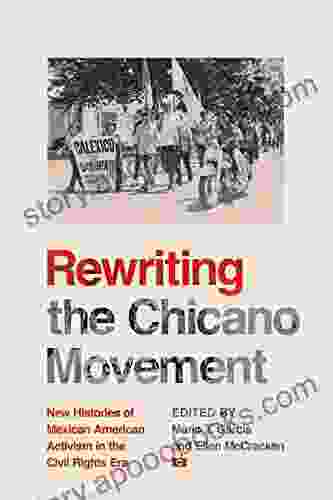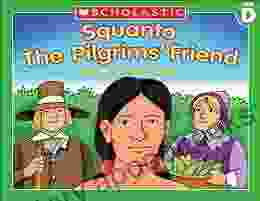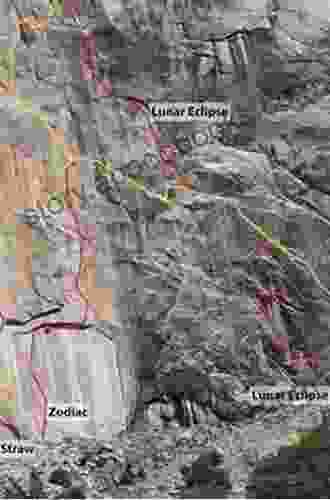Rewriting the Chicano Movement: A Comprehensive Guide to the Past, Present, and Future

The Chicano Movement, a pivotal period of activism and social change, has left an indelible mark on American history. "Rewriting the Chicano Movement" is an essential text that delves into the complexities of this movement, offering a fresh perspective on its origins, key players, and lasting impact. Whether you're a seasoned historian, a student of social movements, or simply seeking to understand a pivotal moment in American society, this article is an invaluable resource.
The Chicano Movement, which emerged in the 1960s, was a multifaceted response to a long history of discrimination and marginalization faced by Mexican Americans in the United States. Drawing inspiration from the Civil Rights Movement and other liberation struggles, Chicano activists sought to empower their community, fight for their rights, and reclaim their cultural identity.
The movement's roots can be traced back to the Mexican Revolution of 1910-1920, which sparked a wave of Mexican immigration to the United States. Many of these immigrants settled in the Southwest, forming vibrant communities but also facing widespread discrimination in housing, education, and employment. This discrimination, coupled with the Vietnam War draft, police brutality, and the lack of political representation, fueled the growing discontent that would eventually erupt into the Chicano Movement.
5 out of 5
| Language | : | English |
| File size | : | 4013 KB |
| Text-to-Speech | : | Enabled |
| Screen Reader | : | Supported |
| Enhanced typesetting | : | Enabled |
| Word Wise | : | Enabled |
| Print length | : | 285 pages |
The Chicano Movement was a collective effort, with numerous individuals and organizations playing pivotal roles. Among the most influential figures were:
- César Chávez: A renowned labor leader and civil rights activist, Chávez co-founded the United Farm Workers Union, advocating for the rights of migrant farmworkers.
- Rodolfo "Corky" Gonzales: A poet, activist, and founder of the Crusade for Justice, Gonzales promoted cultural pride and community empowerment.
- Reies Tijerina: A charismatic leader of the Alianza Federal de Mercedes, Tijerina fought for land rights and cultural autonomy for Mexican Americans in the Southwest.
In addition to these individuals, numerous grassroots organizations emerged, each contributing its unique perspective and strategy to the movement. The Brown Berets, for instance, focused on political activism and community defense, while the Movimiento Estudiantil Chicano de Aztlán (MEChA) played a vital role in organizing students and promoting higher education.
The Chicano Movement employed a diverse range of strategies to achieve its goals. These included:
- Nonviolent Protests: Inspired by the teachings of Mahatma Gandhi and Martin Luther King Jr., Chicano activists organized peaceful marches, rallies, and boycotts to demand their rights.
- Community Organizing: Activists worked tirelessly to build strong, self-sufficient communities, establishing cooperatives, health clinics, and educational programs.
- Political Empowerment: Chicano activists ran for office and formed political organizations to increase their representation in government.
- Cultural Expression: Art, music, and literature played a crucial role in raising awareness, fostering cultural pride, and challenging stereotypes.
The Chicano Movement left a profound impact on American society, contributing to significant changes in politics, education, labor relations, and cultural consciousness. Some of the lasting legacies include:
- Increased Political Representation: The movement helped pave the way for greater political representation of Mexican Americans at all levels of government.
- Cultural Pride and Identity: The movement fostered a renewed sense of cultural pride and identity among Mexican Americans, inspiring new forms of artistic expression and scholarship.
- Labor Rights: The United Farm Workers Union, founded by César Chávez, played a pivotal role in improving working conditions for migrant farmworkers across the country.
- Educational Opportunities: The movement's emphasis on education led to increased access to higher education for Mexican American students and the establishment of Chicano studies programs at universities.
While the Chicano Movement reached its peak in the 1960s and 1970s, its legacy continues to shape contemporary social and political discourse. Scholars have re-examined the movement, offering new interpretations and highlighting its connections to other social justice struggles.
Furthermore, the issues that gave rise to the Chicano Movement, such as discrimination, poverty, and political marginalization, persist today. New generations of activists are drawing inspiration from the movement's history to address these ongoing challenges and work towards a more just and equitable society.
"Rewriting the Chicano Movement" provides a comprehensive and engaging account of this pivotal movement in American history. By examining its origins, key players, strategies, impact, and contemporary relevance, this text offers a fresh perspective that will resonate with historians, activists, and anyone seeking to understand the complexities of social change. Whether you're a seasoned expert or a curious learner, this article is an invaluable resource that will deepen your understanding of the Chicano Movement and its enduring legacy.
5 out of 5
| Language | : | English |
| File size | : | 4013 KB |
| Text-to-Speech | : | Enabled |
| Screen Reader | : | Supported |
| Enhanced typesetting | : | Enabled |
| Word Wise | : | Enabled |
| Print length | : | 285 pages |
Do you want to contribute by writing guest posts on this blog?
Please contact us and send us a resume of previous articles that you have written.
 Book
Book Novel
Novel Page
Page Chapter
Chapter Text
Text Story
Story Genre
Genre Reader
Reader Library
Library Paperback
Paperback E-book
E-book Magazine
Magazine Newspaper
Newspaper Paragraph
Paragraph Sentence
Sentence Bookmark
Bookmark Shelf
Shelf Glossary
Glossary Bibliography
Bibliography Foreword
Foreword Preface
Preface Synopsis
Synopsis Annotation
Annotation Footnote
Footnote Manuscript
Manuscript Scroll
Scroll Codex
Codex Tome
Tome Bestseller
Bestseller Classics
Classics Library card
Library card Narrative
Narrative Biography
Biography Autobiography
Autobiography Memoir
Memoir Reference
Reference Encyclopedia
Encyclopedia Diane Andrews Henningfeld
Diane Andrews Henningfeld Valerie Hannon
Valerie Hannon Rimma Mykhailovska
Rimma Mykhailovska Pippa Norris
Pippa Norris Stewart Nordensson
Stewart Nordensson Randi Stone
Randi Stone Michael Hill
Michael Hill Lou Ross
Lou Ross Mark Berry
Mark Berry Skylar Derouen
Skylar Derouen Matt Gedney
Matt Gedney Frederick Douglass
Frederick Douglass Roger Eschbacher
Roger Eschbacher Rachel Menard
Rachel Menard Tom Mcbride
Tom Mcbride Michael Connelly
Michael Connelly L Frank Baum
L Frank Baum Staci Perry
Staci Perry Suzi Schultz Gold
Suzi Schultz Gold Thomas Seroogy
Thomas Seroogy
Light bulbAdvertise smarter! Our strategic ad space ensures maximum exposure. Reserve your spot today!
 Clinton ReedFollow ·6.1k
Clinton ReedFollow ·6.1k Randy HayesFollow ·17.9k
Randy HayesFollow ·17.9k Ernesto SabatoFollow ·3k
Ernesto SabatoFollow ·3k Bret MitchellFollow ·8.8k
Bret MitchellFollow ·8.8k Edwin BlairFollow ·19k
Edwin BlairFollow ·19k Felix HayesFollow ·15k
Felix HayesFollow ·15k Harvey BellFollow ·12.3k
Harvey BellFollow ·12.3k Samuel Taylor ColeridgeFollow ·12.7k
Samuel Taylor ColeridgeFollow ·12.7k
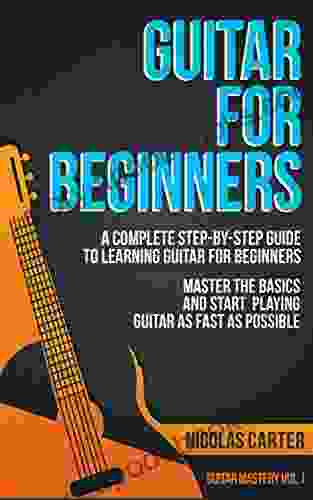
 Jorge Luis Borges
Jorge Luis BorgesUnlock Your Inner Musician: The Ultimate Guide to...
Embark on a Musical...

 Carlos Drummond
Carlos DrummondQuick Reference Guide To Percussion Instruments And How...
Unleash your inner rhythm with...

 Roberto Bolaño
Roberto BolañoUnlock Your Guitar Potential: The Ultimate Guitar Mastery...
Are you ready...

 Fred Foster
Fred FosterLooking for Lady Dee: A Punk Rock Mystery
By [Author's Name] Looking for Lady Dee is...
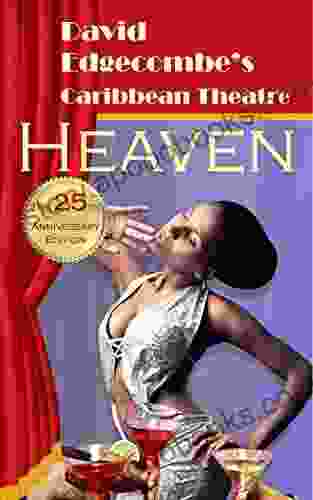
 Jacques Bell
Jacques BellJourney into the Mystical Realm of "Heaven Polly Alice...
In the tapestry of literature, where...
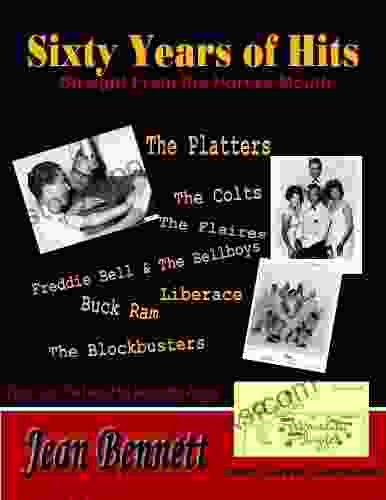
 Julio Ramón Ribeyro
Julio Ramón RibeyroSixty Years of Hits: A Musical Journey Through Time
Music has the...
5 out of 5
| Language | : | English |
| File size | : | 4013 KB |
| Text-to-Speech | : | Enabled |
| Screen Reader | : | Supported |
| Enhanced typesetting | : | Enabled |
| Word Wise | : | Enabled |
| Print length | : | 285 pages |


